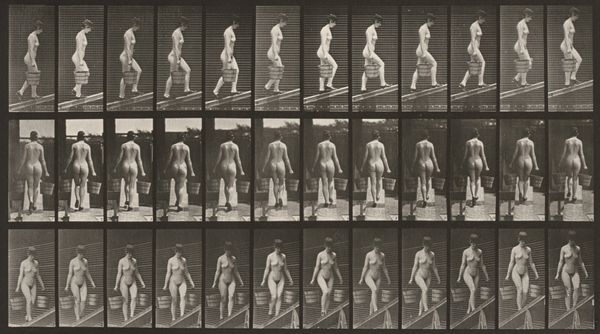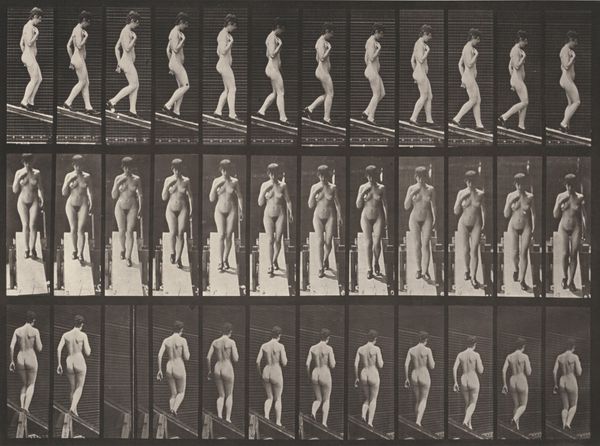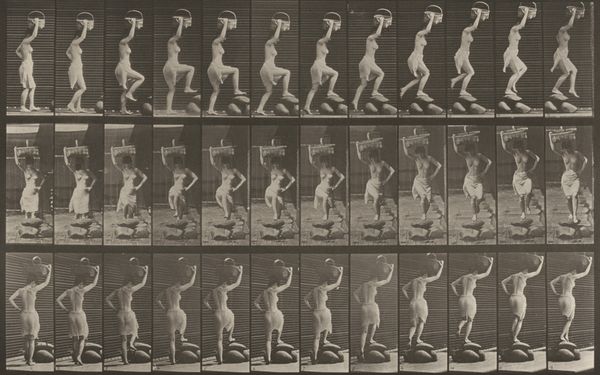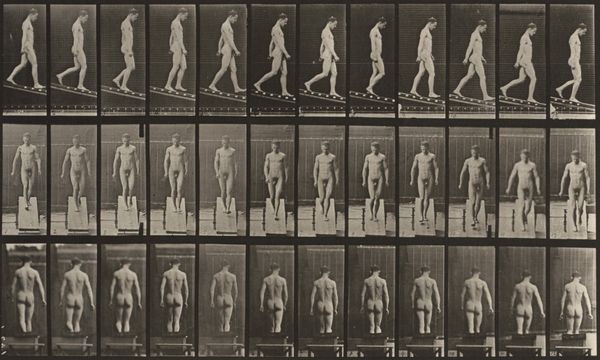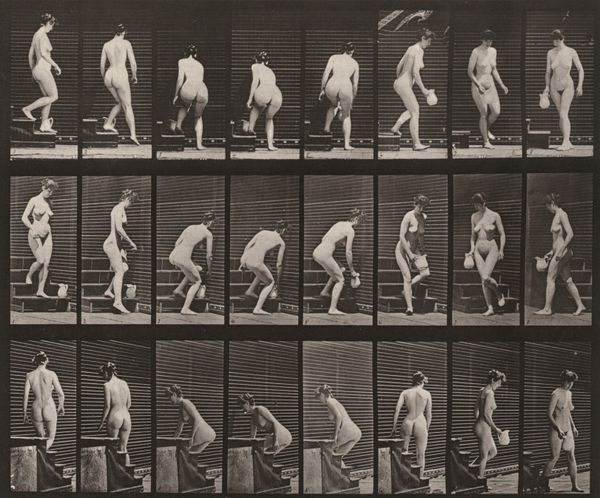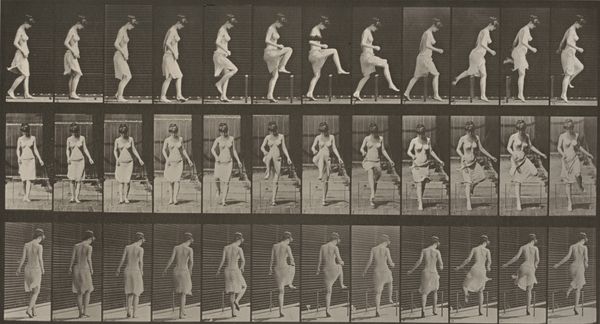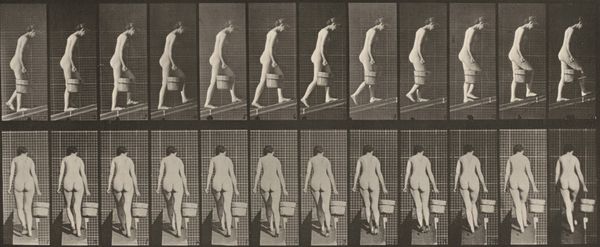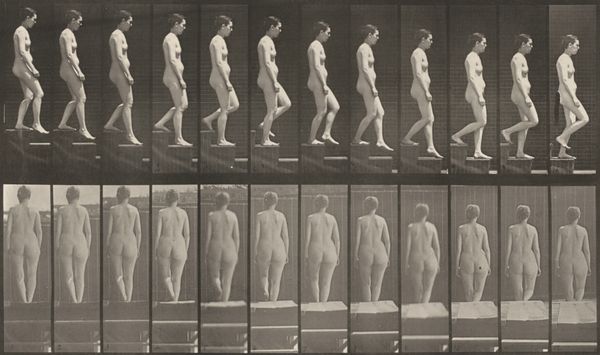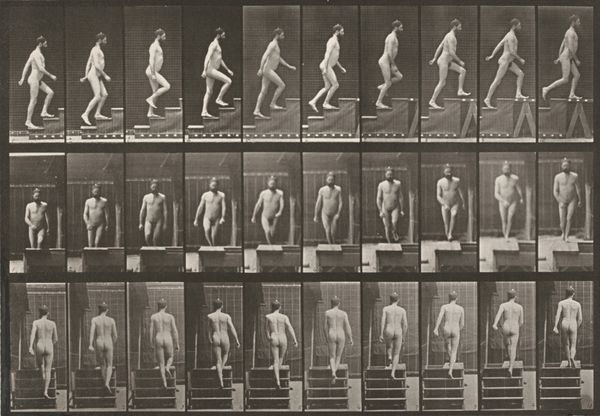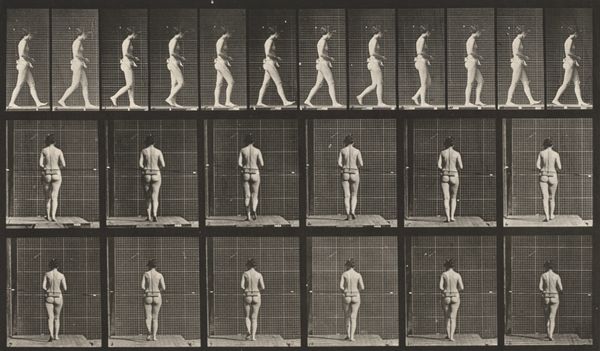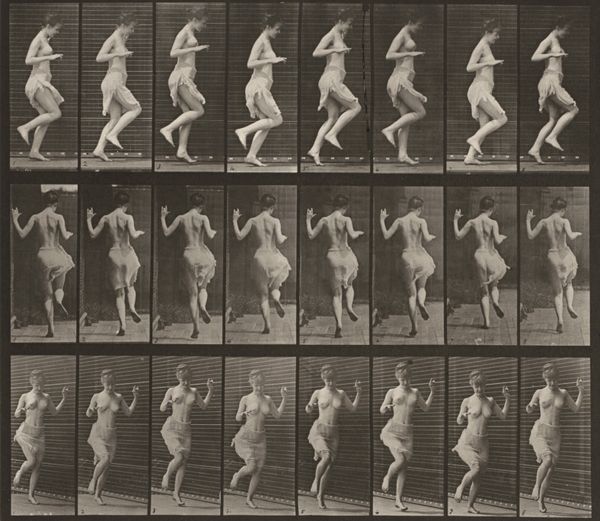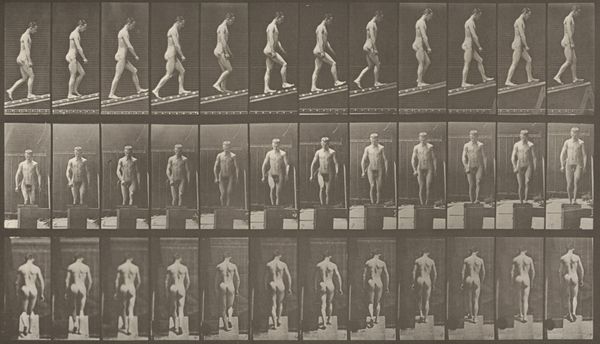
print, photography, gelatin-silver-print
#
kinetic-art
# print
#
impressionism
#
figuration
#
photography
#
gelatin-silver-print
#
nude
Dimensions: image: 20.4 × 36.3 cm (8 1/16 × 14 5/16 in.) sheet: 48.4 × 61.4 cm (19 1/16 × 24 3/16 in.)
Copyright: National Gallery of Art: CC0 1.0
Editor: We're looking at Eadweard Muybridge's "Plate Number 22. Walking with high-heeled boots on" from 1887, a gelatin-silver print showing a woman's movement. The repetition of the images makes me think about early cinema. What catches your eye about this work? Curator: What interests me most is the context in which Muybridge was working. He was driven by scientific curiosity, aiming to capture and analyze motion. Consider the late 19th century’s obsession with scientific progress and categorizing the human experience. This study, commissioned initially for Leland Stanford, reflects the positivist view that everything, even something as natural as walking, could be quantified and understood through objective observation. Editor: So, it’s not just about art; it’s about science trying to define the body? Curator: Precisely. And the body being defined here is a female nude. Think about the institutional power at play – wealthy patrons funding experiments that put the female body on display. Do you see parallels with other artistic or scientific endeavors of the time? Editor: It reminds me of anatomical drawings, maybe, but the movement feels very different from static representations. The high-heeled boots, though, they feel… staged, almost comical against the nudity. Curator: That tension between scientific "objectivity" and societal norms surrounding female presentation is crucial. Were these images meant to be seen by the general public, or were they intended for more private scientific study? The public role of art becomes intertwined with its possible uses as visual documents in discourses of gender and class. How does this change how you perceive this sequence? Editor: I see now how much more than just motion capture is going on. It's like the image captures a moment in society, not just a moment in movement. Curator: Exactly! It demonstrates the public role of art in either supporting or challenging existing conventions. Editor: It's really fascinating to see how even an attempt at scientific objectivity reveals so much about the cultural values of the time. Thanks for pointing all that out.
Comments
No comments
Be the first to comment and join the conversation on the ultimate creative platform.

